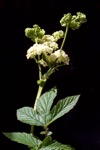Notice (8): Undefined index: geoplugin_countryCode [APP/Controller/AppController.php, line 94]Code Context$Country_code = '';if($ip_data && $ip_data['geoplugin_countryCode'] != null) {$Country_code = $ip_data['geoplugin_countryCode'];$client = null $forward = null $remote = '216.73.216.24' $ip = '216.73.216.24' $ch = unknown $ip_data_in = '{ "geoplugin_status":403, "geoplugin_message": "geoPlugin API is no longer available for free use. To continue access, please upgrade to a paid plan", "geoplugin_url": "https://www.geoplugin.com/subscription" } ' $ip_data = [ 'geoplugin_status' => '403', 'geoplugin_message' => 'geoPlugin API is no longer available for free use. To continue access, please upgrade to a paid plan', 'geoplugin_url' => 'https://www.geoplugin.com/subscription' ] $Country_code = ''App\Controller\AppController::initialize() - APP/Controller/AppController.php, line 94 App\Controller\ProductsController::initialize() - APP/Controller/ProductsController.php, line 31 Cake\Controller\Controller::__construct() - CORE/src/Controller/Controller.php, line 273 ReflectionClass::newInstance() - [internal], line ?? Cake\Http\ControllerFactory::create() - CORE/src/Http/ControllerFactory.php, line 47 Cake\Http\ActionDispatcher::dispatch() - CORE/src/Http/ActionDispatcher.php, line 91 Cake\Http\BaseApplication::__invoke() - CORE/src/Http/BaseApplication.php, line 235 Cake\Http\Runner::__invoke() - CORE/src/Http/Runner.php, line 65 Cake\Http\Runner::__invoke() - CORE/src/Http/Runner.php, line 65 Cake\Http\Middleware\CsrfProtectionMiddleware::__invoke() - CORE/src/Http/Middleware/CsrfProtectionMiddleware.php, line 104 Cake\Http\Runner::__invoke() - CORE/src/Http/Runner.php, line 65 Cake\Http\Runner::run() - CORE/src/Http/Runner.php, line 51 Cake\Routing\Middleware\RoutingMiddleware::__invoke() - CORE/src/Routing/Middleware/RoutingMiddleware.php, line 168 Cake\Http\Runner::__invoke() - CORE/src/Http/Runner.php, line 65 Cake\Routing\Middleware\AssetMiddleware::__invoke() - CORE/src/Routing/Middleware/AssetMiddleware.php, line 88 Cake\Http\Runner::__invoke() - CORE/src/Http/Runner.php, line 65 Cake\Error\Middleware\ErrorHandlerMiddleware::__invoke() - CORE/src/Error/Middleware/ErrorHandlerMiddleware.php, line 96
| Scientific: | Filipendula ulmaria |
|---|---|
| Other: | Meadowsweet |
| Family: | Rosaceae |
Meadowsweet is native to Europe and Asia and has been naturalized in North America. Historically both western and eastern medicine use it as an analgesic for muscle and joint pain. Meadowsweet contains salicin, a glycoside of salicylic acid that is chemically related to the anti-inflammatory drug Aspirin (acetylsalicylic acid). The salicin content also explains its use as an antipyretic for feverish colds and influenza.
Meadowsweet is a classic antiacid herb used for heartburn. Unlike aspirin, which causes stomach ulcers, meadowsweet paradoxically helps treat heartburn and heal stomach ulcers. It contains tannins that reduce stomach acid and inflammation that contributes to ulcer formation. Research suggests it might also inhibit the growth of H. pylori, a bacteria that commonly cause ulcers.
Gastrointestinal
• digestive complaints caused by acid damaging mucous membranes
• hyperchlorhydria
• gastic ulcer (H. pylori)
• gastritis
• gastric esophageal reflux disease (GERD)
Note: although salicylates are known to cause ulcers paradoxically, meadowsweet has anti-ulcerogenic effects. Mechanism remains unclear.
Musculoskeletal
• rheumatic condtions
• myalgia
• osteoarthritis (OA)
• rheumatoid arthritis (RA )
• Stomachic
• Antacid
• Antiulcerogenic
• Antiinflammatory
• Antirheumatic
• Analgesic
• Antiemetic
• Diuretic
• Antipyretic
• Anticoagulant
• Simple Phenolics (E.g. Salicylates)
• Tannins
• Flavonoids
• Tincture (1:5 in 45% EtOH): 2-4 ml tid
• Infusion (dried herb): 1-2 tsp tid
Note: antiulcerogenic properties are associated with an aqueous extract of the flowers.
Contraindications: Pregnancy and lactation; safety has not yet been established with respect to salicylates.
Cautions: Aspirin sensitivity, children (Reye's syndrome).
High doses: May lead to metabolic acidosis with compensatory respiratory alkalosis.
• Anticoagulants (Coumadin) • Caution: it may increasing bleeding time due to salicyclates.
Barnes J, Anderson LA, Phillipson JD. Herbal Medicines, 3rd ed. London: Pharmaceutical Press, 2007.
Bone K. Principles and Practice of Phytotherapy. Edinburgh: Churchill Livingstone, 2000.
Bone K. A Clinical Guide to Blending Liquid Herbs: Herbal Formulations for the Individual Patient. St Louis, MO: Churchill Livingstone, 2003.
Brinker F. The Toxicology of Botanical Medicines, 3rd ed. Sandy, Oregon: Eclectic Medical Publications, 2000.
Felter HW, Lloyd JU. King's American Dispensatory. 1898. http://www.ibiblio.org/herbmed/eclectic/kings/main.html. Accessed: August 19, 2006.
Hoffman D. Medical Herbalism. Rochester, Vermont: Healing Arts Press, 2003.
Weiss RF. Herbal Medicine. Beaconsfield, England: Beaconsfield Publishers Ltd, 1988.
Williamson EM, ed. Major Herbs of Ayurveda. Edinburgh: Churchill Livingstone, 2002
Disclaimer: This content is subject to change. The information is intended to inform and educate; it does not replace the medical evaluation, advice, diagnosis or treatment by a healthcare professional. www.nhpassist.com © 2014 NDAssist Inc. and/or its affiliates. All rights reserved.

|
Meadowsweet
SummaryMeadowsweet is native to Europe and Asia and has been naturalized in North America. Historically both western and eastern medicine use it as an analgesic for muscle and joint pain. Meadowsweet contains salicin, a glycoside of salicylic acid that is chemically related to the anti-inflammatory drug Aspirin (acetylsalicylic acid). The salicin content also explains its use as an antipyretic for feverish colds and influenza. IndicationsSign in requiredActionsSign in requiredConstituentsSign in requiredPosologySign in requiredSafetySign in requiredInteractionsSign in requiredReferencesSign in required |
|---|